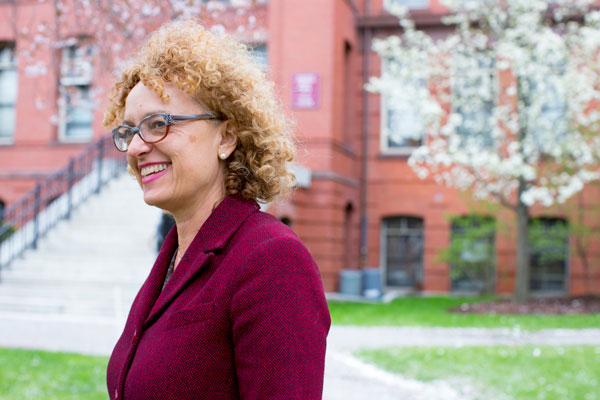On April 30, the Harvard Museums of Science and Culture and the Harvard Art Museums launched an annual program focusing on innovative curatorial practice, offering seminars and a public lecture each year.
The inaugural lecture, Worldly Worlding: Curating the Imaginal Fields of Science and Art, featured Carolyn Christov-Bakargiev, artistic director of dOCUMENTA (13), an international art exhibit held in Germany in 2012. The critically acclaimed exhibition focused on the integration of science into the contemporary art world.
In curating and coordinating dOCUMENTA (13), Christov-Bakargiev said that one of the fundamental questions of the exhibition focused on connectivity and togetherness. “How do you make something that has a togetherness, and at the same time is a centrifugal structure outward, [that] has the shared knowledge that we aggregate and disaggregate in our contemporary life?” she asked.
One answer, she said, could be found in an installation containing several small Bactrian princess statues, which originate from the northern part of Afghanistan. Dated to 2000 BCE, only 80 such statues are currently known in existence.
Each princess is “about the size of an iPod,” said Christov-Bakargiev, “and each is a composite stone figure made up of separate pieces—one for hair, for example, and another for the face. These individual sections, which together give the princess form, are not bound by glue or secured by any other mechanism.
Instead, balance is key in maintaining these delicate and serene figures. Christov-Bakargiev said that a sense of history, equilibrium, and uniqueness was fundamental to the theme of dOCUMENTA (13).
The placement of the ancient stone figures in a contemporary art installation also speaks to the theme of collapsing accepted categories. Removed from their archaeological (scientific) context, these figures can now be seen with fresh eyes. This is akin to the innovative exhibition strategies Harvard Art Museums curators are applying to the installations in our new facility.
The collaboration between the Harvard Art Museums and the Harvard Museums of Science and Culture is part of the museums’ ongoing effort to build and strengthen partnerships across the university and in the broader community.



